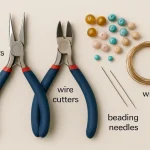Figure 1: Advanced 5-axis CNC machining enable the creation of highly complex geometries in a single setup, revolutionizing precision manufacturing
Introduction: Overcoming the Limitations of Traditional Manufacturing
For engineers and product developers driving innovation in 2025, designing high-performance components is synonymous with pushing the boundaries of geometry. Complex contours, undercuts, and intricate organic shapes are essential for optimizing function in aerospace, medical, and automotive applications. However, these advanced designs have historically posed a significant manufacturing challenge. Reliance on 3-axis machines often necessitates multiple setups, leading to potential misalignment, increased fixturing costs, and protracted lead times that can stifle innovation cycles. This definitive guide explores 5-axis CNC machining, a transformative technology that systematically eliminates these bottlenecks. We will deconstruct how it empowers designers to create monolithic parts with unprecedented complexity, while simultaneously enhancing precision, improving surface quality, and reducing total production costs. Understanding this capability is no longer a luxury but a strategic necessity for maintaining a competitive edge in precision manufacturing.
Check this related post for more insights that add value to your reading.
Demystifying 5-Axis CNC Machining: A Fundamental Leap Beyond Linear Movement

Figure 2: Visual guide to the five axes of movement and the complex part features, such as undercuts and contours, that 5-axis machining can produce.
At its core, 5-axis machining involves a cutting tool that moves linearly along the X, Y, and Z axes, while the workpiece rotates on two additional rotational axes (typically A and B). This simultaneous multi-directional movement allows the cutting tool to approach the workpiece from virtually any orientation in a single, streamlined setup.
- Key Differentiator: Simultaneous vs. Indexed Machining: A critical distinction must be made between two primary operational modes. In 3+2 or “indexed” machining, the rotary axes position the workpiece at a fixed angle and then lock in place for a standard 3-axis cutting operation. While beneficial for accessing difficult angles, true simultaneous 5-axis machining keeps all five axes in constant, coordinated motion. This capability is indispensable for machining complex, contoured surfaces… The precision required for such processes begins with certified raw materials. For instance, the ASTM B209 specification for aluminum alloy plates provides a critical foundation, ensuring consistent material properties that are essential for predictable machining behavior and final part performance. This baseline of material integrity allows advanced manufacturing partners to push the limits of geometric complexity with confidence.
The Tangible Advantages: Why Your Next Project Demands 5-Axis Technology
Adopting 5-axis technology is a strategic decision that yields quantifiable benefits across cost, quality, and time—the triple constraints of any project.
- Unmatched Design Freedom and Part Consolidation: The most significant advantage is the ability to machine complex geometries that are impossible or prohibitively expensive with traditional 3-axis methods. This empowers engineers to consolidate what was once an assembly of multiple components into a single, monolithic part. This “design for assembly” approach reduces potential points of failure, simplifies supply chain and inventory management, and often results in a stronger, lighter, and more reliable final product.
- Superior Surface Finish and Geometric Accuracy: By maintaining a constant, optimal cutting posture and utilizing the shortest possible tool length, 5-axis machining reduces tool deflection and vibration. This stability allows for higher feed rates and delivers a superior surface finish straight off the machine. Furthermore, geometric accuracy is exceptional because the entire part is machined in a single clamping, completely eliminating registration errors between separate setups. The pursuit of superior surface quality often leads to post-processing anodizing. Here, the MIL-A-8625 standard serves as the global benchmark for anodized coatings. This U.S. military specification rigorously defines the requirements for various anodizing types (e.g., Type II for corrosion resistance, Type III for wear resistance), including coating thickness, density, and seal quality. Adherence to MIL-A-8625 is not just about meeting a spec; it’s a verifiable commitment to achieving surface finishes that can withstand harsh environments, ensuring long-term part durability and reliability—a critical consideration for aerospace, military, and medical applications.
- Drastic Reduction in Lead Times and Simplified Fixturing: The single-setup nature of the process is a profound time-saver. There is no need for manual repositioning of the workpiece, design and fabrication of complex fixtures for secondary operations, or requalification of parts after moving them. This streamlines the entire production workflow, accelerating the path from digital file to finished part and getting products to market faster.
Strategic Applications Across Key Industries in 2025
The unique benefits of 5-axis machining make it indispensable in sectors where performance, precision, and light weighting are non-negotiable.
- Aerospace & Defense: This industry relies on 5-axis machining for manufacturing turbine blades, engine components, structural airframe elements, and satellite parts with intricate internal cooling channels. The technology’s proficiency with high-temperature alloys and its ability to produce structurally optimal, lightweight components are critical for fuel efficiency and performance. Publications from the European Space Agency (ESA) often emphasize the role of advanced subtractive manufacturing in creating lightweight, high-strength satellite components, where every gram saved translates to significant launch cost reductions. This aligns perfectly with the capabilities of 5-axis machining to produce such mission-critical hardware with maximum efficiency and reliability.
- Medical Device Manufacturing: The medical field leverages 5-axis technology for producing complex, patient-specific implants (e.g., for cranial or orthopedic applications), sophisticated surgical instruments, and durable prosthetics. The ability to machine biocompatible materials like titanium and medical-grade PEEK to exacting, sterile-surface finishes is paramount for patient safety and product efficacy.
- Automotive & Motorsports: From rapid prototyping of complex intake manifolds and cylinder heads to machining high-performance custom suspension components, 5-axis machining enables accelerated innovation. It allows engineers to produce parts that maximize strength-to-weight ratios, directly contributing to improved vehicle performance and efficiency.
Navigating the Challenges: A Practical Guide for Successful Implementation
While powerful, a successful 5-axis project requires meticulous planning and expertise. Understanding these challenges is the first step to mitigating them.
- Advanced CAM Programming and Simulation: The programming for simultaneous 5-axis machining is exponentially more complex than for 3-axis. It requires sophisticated CAM software and highly skilled programmers to generate efficient, collision-free tool paths. In-process simulation is no longer a luxury but a necessity to prevent costly machine crashes.
- Capital Investment and Operational Expertise: The acquisition cost for 5-axis machines and the requisite software represents a substantial capital investment. Furthermore, operating them at peak efficiency demands a higher level of expertise in both programming and machine operation. For many businesses, partnering with an experienced manufacturer who has already made this investment and cultivated the necessary skills is the most strategic and cost-effective path forward.
FAQs
- What is the fundamental difference between 5-axis and 3-axis CNC machining?
The fundamental difference lies in mobility and setup. A 3-axis machine moves the tool in three linear directions (X, Y, Z). A 5-axis machine adds two rotational axes (A and B), allowing the tool to approach the workpiece from any angle in a single setup, enabling the machining of far more complex geometries without repositioning.
- Is 5-axis machining only suitable for highly complex parts?
Not exclusively. While it is essential for complex parts, it is also highly advantageous for parts that may appear simple but have features on multiple sides. By completing the part in one setup, 5-axis machining reduces total production time, improves accuracy, and lowers labor costs associated with handling and fixturing, making it efficient for a wider range of components.
- How does 5-axis machining improve surface finish?
It allows the tool to maintain a consistent tilt relative to the surface being cut (a technique like “tool-axis optimization”). This ensures the sharpest part of the tool (the tip or periphery) is always engaged, rather than the slower-moving center. This reduces vibration, allows for higher feed rates, and minimizes scalloping or cusping, resulting in a smoother surface directly from the machine.
- What are the primary cost considerations when opting for 5-axis machining?
The primary costs are the higher machine time rate (due to advanced equipment and expertise) and more complex CAM programming. However, this must be evaluated against the Total Cost of Production: savings from reduced fixturing, fewer setups, lower secondary operations, and improved part quality often make 5-axis more economical for complex parts.
- My designs are currently made for 3-axis machining. How can I adapt them for 5-axis?
The best approach is early collaboration with your manufacturing partner. They can provide Design for Manufacturability (DFM) feedback to leverage 5-axis advantages, such as suggesting part consolidation, optimizing internal features, and recommending tolerances that maximize the process’s strengths while minimizing costs and lead times.
Conclusion: Integrating 5-Axis Machining into Your 2025 Development Strategy
5-axis CNC machining has evolved from a niche technology into a fundamental pillar of modern engineering and manufacturing. It provides a clear and proven pathway to innovate faster, improve product performance, simplify production logistics, and reduce total costs. By understanding its core principles, tangible advantages, and application requirements, engineering teams can make informed, strategic decisions to leverage this technology for their most challenging projects. The key to unlocking its full potential lies in early and collaborative partnerships between design and manufacturing teams.
Author Bio
This article is contributed by Jason Lee. He is a technical expert at JS Precision which is an ISO 9001 and AS9100 certified enterprise that provides CNC machining services, sheet metal fabrication, and molding in aerospace, medical, and automotive industries solve complex prototyping and production challenges with high-precision manufacturing solutions. Discover more insights on advanced manufacturing techniques by visiting their machining guide Blog.
Explore more content crafted to inspire curiosity and spark new ideas at 2A Magazine.







